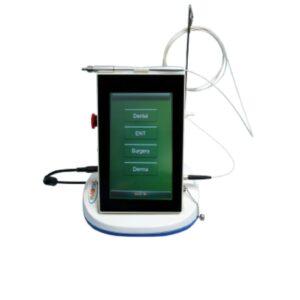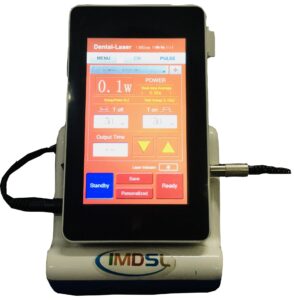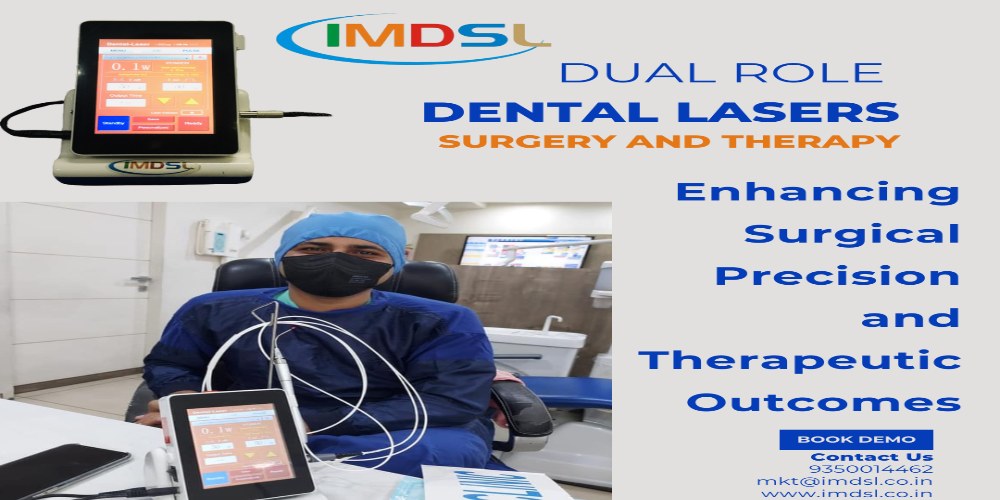- 22
- Apr
Understanding the Dual Role of Dental Lasers in Surgery and Therapy
In the rapidly evolving world of dentistry, dental lasers have emerged as a cornerstone technology, enhancing both surgical precision and therapeutic outcomes. This versatile tool has revolutionized dental procedures by providing a minimally invasive alternative that reduces discomfort and speeds up recovery. In this blog post, we’ll explore the multifaceted applications of dental lasers in both surgical and therapeutic contexts, highlighting their benefits and the impact they have on patient care.
Dental Lasers in Surgery
Traditionally, dental surgeries have been synonymous with scalpels and sutures, often leading to significant patient anxiety and discomfort. Dental lasers have changed this narrative by offering a scalpel-free solution for many procedures. Here’s how lasers are used in dental surgeries:
Soft Tissue Procedures
Dental lasers excel in the management of soft tissues. They are commonly used for gingivectomy (removal of gum tissue), frenectomy (removal of connective tissue), and biopsies. The laser cuts through tissue with high-energy light beams, making incisions while simultaneously cauterizing blood vessels. This results in less bleeding and reduces the risk of infection.

Crown Lengthening and Gum Contouring
Dental lasers provide precise control over tissue removal and reshaping, making them ideal for cosmetic procedures such as crown lengthening and gum contouring. These procedures adjust the gum and bone level to expose more of the tooth, enhancing aesthetic outcomes and gum health.
Implant Recovery
Lasers are also used to uncover dental implants once they have integrated with the bone, allowing for a less invasive procedure than traditional methods.
The precision of dental lasers not only minimizes tissue damage but also preserves more of the healthy tissue surrounding treatment areas, leading to quicker recovery times and less postoperative discomfort.
Dental Lasers in Therapy
Beyond their surgical applications, dental lasers also play a pivotal role in therapeutic treatments, particularly in managing pain and healing. They are used in the following ways:
Treatment of TMJ Disorders
Lasers can be used to relieve pain and inflammation associated with Temporomandibular Joint Disorders (TMJ). The low-level laser therapy (LLLT) helps in reducing joint pain and muscle soreness by promoting cell regeneration and increasing blood circulation.

Periodontal Therapy
In periodontal therapy, lasers treat gum disease by removing inflamed gum tissue and promoting the regeneration of healthy tissue. They are used to target and reduce periodontal pockets, as well as to kill bacteria along the gum line without harming the surrounding tissues.
Aphthous Ulcer Treatment
Lasers are effective in treating painful aphthous ulcers, commonly known as canker sores, by reducing pain and promoting faster healing.
Advantages of Dental Lasers
The integration of lasers into dental practice brings numerous advantages:
- Reduced Discomfort: Many patients experience less discomfort during and after laser procedures compared to traditional methods.
- Minimized Bleeding and Swelling: Due to their ability to cauterize as they cut, lasers significantly reduce bleeding and swelling.
- Decreased Risk of Infection: The sterilizing effect of the laser beam reduces the risk of infection.
- Faster Recovery: Laser procedures typically result in faster healing times, allowing patients to resume normal activities sooner.
Dental lasers are transforming the landscape of dental care by providing tools that aid in both surgical and therapeutic procedures. Their ability to reduce treatment time, enhance comfort, and improve recovery outcomes make them an indispensable part of modern dental practice.
As technology advances, we can expect dental lasers to play an even greater role in improving patient care, making dental visits less daunting and more efficient. Whether for cutting tissue or healing pain, dental lasers represent a peak in dental technology innovation.


Comments